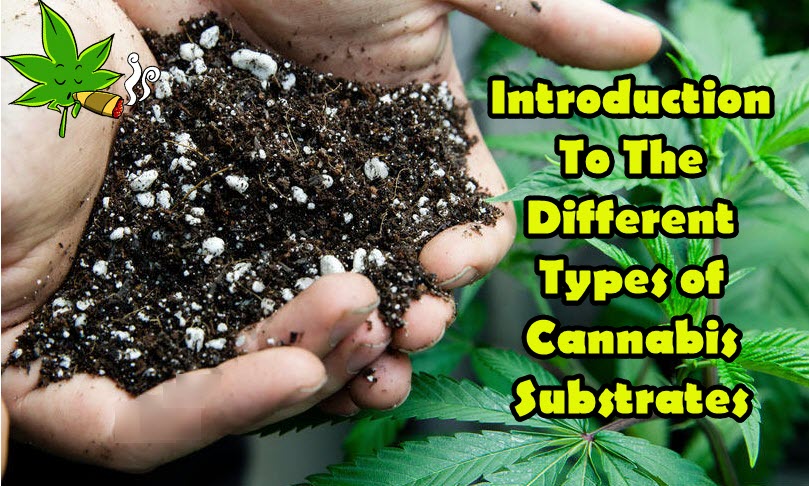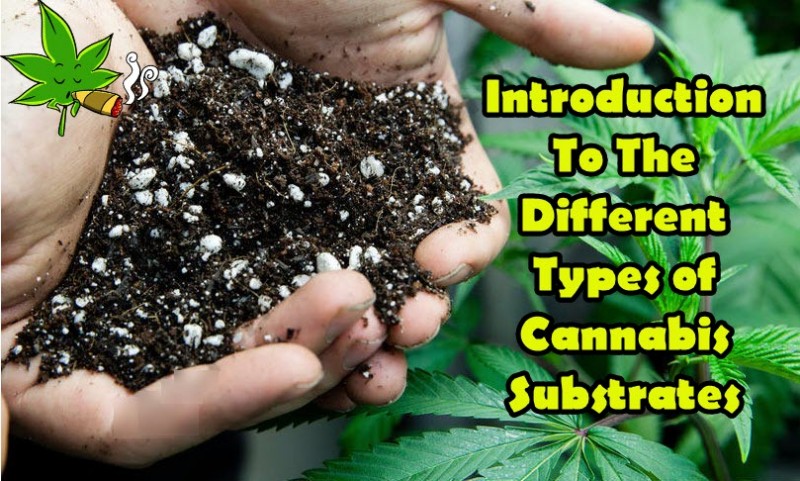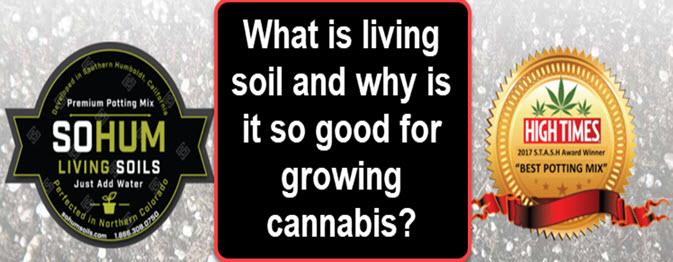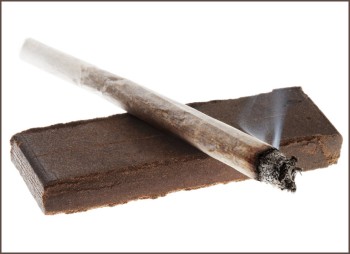Introduction To The Different Types of Cannabis Substrates

Looking to start growing your own cannabis? Good choice.
One of the most important things you need to know about growing pot is the substrate you’re going to use. Substrates refer to the material where plant (in this case, cannabis) roots will grow. Choosing the right kind of substrate for growing pot is essential because an inappropriate choice can harm the growth of your plant.
There are different kinds of substrates out there, each of them with its own advantages for growing cannabis using various systems and methods. The exception is aeroponic systems, but both indoor and outdoor growing utilize substrates. The basic requirements for substrates are:
- Excellent nutrient base
- Good drainage and water retention
- Good texture; critical for root development
- Stable pH (6 is ideal)
Soil
Soil is the most popular substrate used for all kinds of vegetation on earth. It’s the growing medium of choice for anyone who is into cultivation or agriculture. However, not all kinds of soil are ideal for growing cannabis; it must have the necessary composition, structure, and characteristics to help your plant thrive.
Ideally, soil shouldn’t be too compacted or heavy. Otherwise, this would prevent the roots from fully expanding. This is why cannabis growers don’t use clay, it’s just too impermeable and will prevent any water from passing through. It’s also necessary to understand the oxygenation process – if a substrate is very spongy, it becomes easier for your plant to grow and expand the root system with no issues. Other substrates that work well with soil to oxygenate it include coconut, perlite, vermiculite, and volcanic lava rocks; these are excellent options since they don’t impact the pH levels of the substrate.
Most cannabis-specific substrates in the market are usually a combination of blond and black peat, tree bark, coconut fiber, fibrous peat, worm humus, and perlite as well as other components. Each brand has its own formula although these have been carefully designed to meet the very specific needs of the cannabis plant.
The levels of fertilizer soil are rated low, medium, or high based on its nutrient content, which is assimilated slow, medium, or rapidly. Most cannabis substrates contain low to medium nutrient compositions; these are usually known as light mix or all mix.
Perlite
Perlite is a kind of mineral known as silica which doesn’t absorb water. It’s essentially volcanic glass that has been heat treated. Many cannabis growers prefer using perlite because aside from the fact that it’s inexpensive, it’s efficient in improving the quality of the grow medium, and helps ensure aeration and drainage. Perlite essentially works by holding water on the surface so that roots can absorb it.
This substrate is rarely ever used on its own; the most common way to use perlite as a substrate is to mix it with coconut or soil for an improved texture or increased drainage in organic soils. It can also be used on top of your substrate as a top mulch layer which helps retain moisture, which is beneficial if you are growing outdoors in hot weather or during the summer. Stabilizing the pH level of perlite or not will vary based on how you choose to use it. If you end up mixing it with soil, stabilizing isn’t necessary since it won’t impact the pH levels of the chosen growing medium because it is neutral. But if you use perlite on its own, its natural pH level of 7 should be reduced slightly.
There are three grades of perlite: fine, medium, and coarse. Fine grade is ideal for cannabis cultivation, as it’s used as an amendment to coco coir or soil, promoting air retention and proper drainage. It’s also good to note that perlite is the perfect substrate for coco coir.
Additionally, perlite is widely used for clones because it helps new roots penetrate the light structure of perlite with almost no effort. This results in quicker root growth, and the advantage for the grower is that it reduces the time between cutting to growing the plant.
Mapito
Mapito is widely used by Dutch growers. It’s a mixture of coco coir and rockwool, and its strength lies in moisture retention and excellent oxygenation. However, mapito needs to be treated before adding seeds, following a process that is similar to rockwool’s.
Mapito is naturally flaky, and because it’s loose, growers must avoid pressing too hard when you transfer it to the pot because this may stress the roots.
Hydroponics
Hydroponic cultivation is growing in popularity not just for vegetation but for cannabis as well. This cultivation method is reserved for growers who have experience growing cannabis in soil, and have a good grasp of pH levels and EC (electroconductivity).
There are many different kinds of substrates used in hydroponics, but one thing they all share in common is that they are inert, which means that don’t contain any plant nutrients. This is why fertilizers are needed every time you water them, as long as they are in the right amount based on your cannabis plant’s life cycle. pH is even more important when you use hydroponics because it will have a great impact on the ability of your roots to absorb both micro and macro elements. When pH levels are incorrect, this results in deficiencies and imbalances as well as other growing problems.
These are the best hydroponic substrates for large and heavy yields:
- Coconut fiber: Coconut fiber is a popular choice for hydroponic cultivation because it’s the closest in property to soil. It’s made up of the coconut’s outer fibers in various particle sizes. The bigger the particles are, the less it retains water so it takes a shorter time to dry leading to more irrigation and feeding opportunities for your plants. This kind of substrate works well with mineral fertilizers but you can also use microbes for organic growing, which help break down food and enable roots to assimilate it efficiently. Coconut fibers are naturally rich in nutrients, has a neutral pH level, and can be used for as long as 5 years. Also known as coco coir, this is this is the most popular choice for growers in Asian regions. But it’s also very beneficial for indoor cultivation since it’s resistant to fungus, despite the fact that it has the ability to retain water for a very long time.
- Expanded clay pebbles: Another popular choice for hydroponic substrates, expanded clay pebbles are small ceramic balls that resemble marbles. In some cases they may be larger or smaller. A primary advantage to using expanded clay pebbles is that they are beneficial for recirculation systems which require changing the pH and EC of the nutrient solution instead of the water and fertilizer solution. A major advantage of using expanded clay pebbles is that aside from helping with recirculation, it helps uphold the high oxygenation levels in the roots for more continuous irrigation. This means that your plant can be fed often and in little amounts, contributing to a robust root system leading to very fast growth and massive flowering.
- Rock wool: Rock wool is also popular for hydroponic cultivation of marijuana. It’s low maintenance and easy to use; plus, doesn’t require too much cleaning. However, take note that pH levels should be stabilized just like when using clay pebbles. Small cubes of rock wool can be used in the beginning, treating them like small pots, but once your cannabis plants start establishing roots then you can transfer them to a rock wool slab. Each slab can fit as much as 4 or 5 plants, or up to 30 per square meter.
Aeroponic Crops
Aeroponic systems don’t use substrates since a portion of the roots is kept in the air, while the rest of the plant rests on the aeroponics system. The roots in aeroponic systems are nourished through particles of water, or a thin layer of water which moves about beneath the roots.
A major advantage to growing aeroponic cannabis is that nothing can beat how well its roots grow, since it has nothing to get in its way. They grow at a tremendous pace, and in just as little as a few days, you can even see massive roots which you won’t get with other kinds of substrates. Other advantages to using an aeroponic system for cannabis is not needing a substrate, vigorous flowering, and healthy plants. But the disadvantage is that your plants will suffer a tremendous impact in just a few hours if your irrigation pump fails.
No-substrate growing methods such as aeroponics require using pH and EC meters because these are vital to the growth of your plant. It helps you ensure that the pH and EC are always in optimum levels to allow the cannabis absorb exactly the nutrients that it needs.
Conclusion
The kind of substrate you choose to use will depend on your need as a grower. No matter which one you end up choosing, make sure to do the necessary research on how to best optimize it for maximum growth and yield from your cannabis plant without sacrificing its nutrient needs.
OTHER STORIES YOU MAY ENJOY...
WHAT IS THE BEST SOIL TO GROW CANNABIS, READ HERE.








